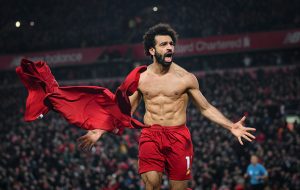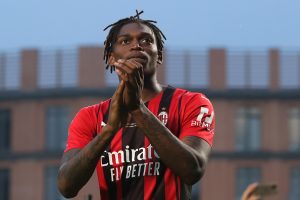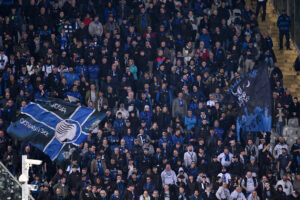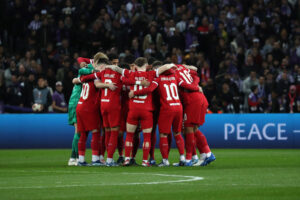More than half a million people populate the Portuguese capital of Lisbon – one of Europe‘s most well-known locations and an epitome of cultural and artistic brilliance. Renowned for it’s magnificent artistic and historical style, the country’s largest city is also its main economic hub. A part of their civilization and way of life is also their football and the city hosts one of the country’s biggest domestic games – the Lisbon Derby between Benfica and Sporting Clube de Portugal.
These two teams are famous for making Portuguese football one of the most esteemed in the sport. Along with FC Porto, the two Lisbon sides have their youth academies held in high regard and a responsible for producing some of the country’s greatest ever players – a list that includes the likes of Eusébio, Luís Figo, and Cristiano Ronaldo amongst so many others. But what makes this rivalry great is the tradition of it and how the early 20th century created a hatred so strong that it benefited an entire nation more than a hundred years later and will continue to do so in the future
This is the Derby de Lisboa:
The Rivalry
Benfica were formed in 1904, initially as Sport Lisboa, by a group of students who couldn’t provide adequate funding to help the club progress. They couldn’t provide them with the best of conditions or facilities and often struggled to match their rivals. Sporting were born in 1906 and were funded by the grandfather of José Alvalade – who was the founder of the club.
The rivalry was born in 1907, just before the two sides would clash for the first time. Sporting signed eight of Benfica’s players with the promise of better playing and performance conditions. This claim is differed by Benfica’s loyalists who claim those eight players were “stolen” away from them. The difference in class was shown in their first clash where on a rainy night at Sporting’s stadium back in the day, Quinta Nova, the rain soaked shirts of the Sporting players were replaced by fresh ones. Sporting managed a close 2-1 success that night.
Benfica were also embarrassed in 1911 when they weren’t welcomed by their counterparts before a game that year. Sporting’s royal players felt that Benfica weren’t worthy of receiving a welcome to their treasured ground, thus the poor show of sportsmanship and the extra fuel to ignite the hatred.
The Fans
The Lisbon Derby celebrates one of the most exquisite and passionate set of fans in football. On match days, these two sides set an atmosphere that is hard to match in any football game around the world. With choreographies, flares, fireworks and tifos, the Lisbon Derby is one of the most intense in any sport.
Both sides have their own set of ultras groups. For Sporting, their main supporters group is named Juventude Leonina, simply known as Juve Leo. They’ve been in existence since 1976 and are the oldest fan group for any side in Portugal. Located in the upper south end of the Estádio José Alvalade, they’re very similar to Italian ultras and support their team in full voice before, during and after every game. Many believe Juve Leo are the reason for the existence of other fan groups in the country such as the Blue Dragons of FC Porto or the Red Devils of their rivals, Benfica.
The Diabos Vermelhos, or Red Devils in English, are Benfica’s oldest fan group, located in the north corner of the Estádio da Luz. Formed in 1982, they’ve been one of the most prominent fan groups in Europe, having reached over 5000 members at one point. However, a disagreement between the group resulted in the formation of another group called No Name Boys and that led to them having as little as 10 members in the middle of the nineties. They’ve picked up since and under new leadership, they’re back to where they were.
The two sets of fans have had their fair share of violence over the years. In the 1996 Portuguese Cup Final between the two, a fire-cracker that was let out after Benfica scored hit Sporting supporter Rui Mendes who was killed immediately. This prompted chants of “killers, killers!” from the Sporting faithful as they would watch their side crash 3-1 and instantly head into mourning after the result was sealed. Another incident occurred 15 years later, this time it was the Sporting supporters at fault. After a league game ended as a Benfica success at the Estádio da Luz, a group of Sporting fans set their section of the stadium on fire in response to the tough loss. Firemen had to quickly cool the fire down to avoid it from spreading to the rest of the arena.
The Players
Benfica and Sporting have a history of producing talented footballers through their world-famous youth setups. In addition to the players mentioned above, there have been the likes of Simão Sabrosa and João Moutinho in the modern era while the likes of Adrien Silva and William Carvalho have come up for Sporting in recent years. 10 of the 14 players used in the final of Euro 2016 for Portugal graced from the Sporting academy that proves how good their system is and why it’s regarded as one of the best in the world.
Benfica meanwhile are more renowned for developing international players with the likes of David Luiz, Ángel Di María and Victor Lindelöf having honed their skills at the club over time. That shouldn’t discredit their past where they won a whole host of trophies with all-Portuguese sides, including the European Cups of 1961 and 1962. They’ve also got Renato Sanches and André Gomes to boast about, who now represent Bayern Munich in Germany and Barcelona in Spain respectively.
“There were some tough times. I was chased by some fans and got through some pretty tricky situations. I never had police protection or bodyguards: it was more a case of people simply having different opinions” – EX-BENFICA AND SPORTING PLAYER PAULO SOUSA
Several players have also represented both halves of the Lisbon divide over the years. This includes João Pinto, one of the members of Portugal’s “golden generation” of the late 90s, who played for the Eagles between 1992 and 2000 and for Sporting from 2000 until 2004. There was also Paulo Sousa who represented Benfica in the early 90s before moving to Sporting in 1993 and becoming a figure of hate whenever he visited the Estádio da Luz. Current Sporting manager Jorge Jesus had a successful six-year stint with Benfica and is the club’s most decorated manager with 10 trophies.
The Match
Benfica and Sporting meet for the 299th time in their history on Sunday, 109 years after their first meeting. Despite the early successes, Benfica hold a greater record in this tie, having 129 meetings compared to 108 for Sporting. Intensity, hatred, history and atmosphere all come down upon the Estádio da Luz on Sunday evening to take part in one of football’s most profound football games. This is the Lisbon Derby.
PREVIOUS EDITION OF THE DERBY SERIES: FENERBAHÇE vs GALATASARAY
Main Photo






